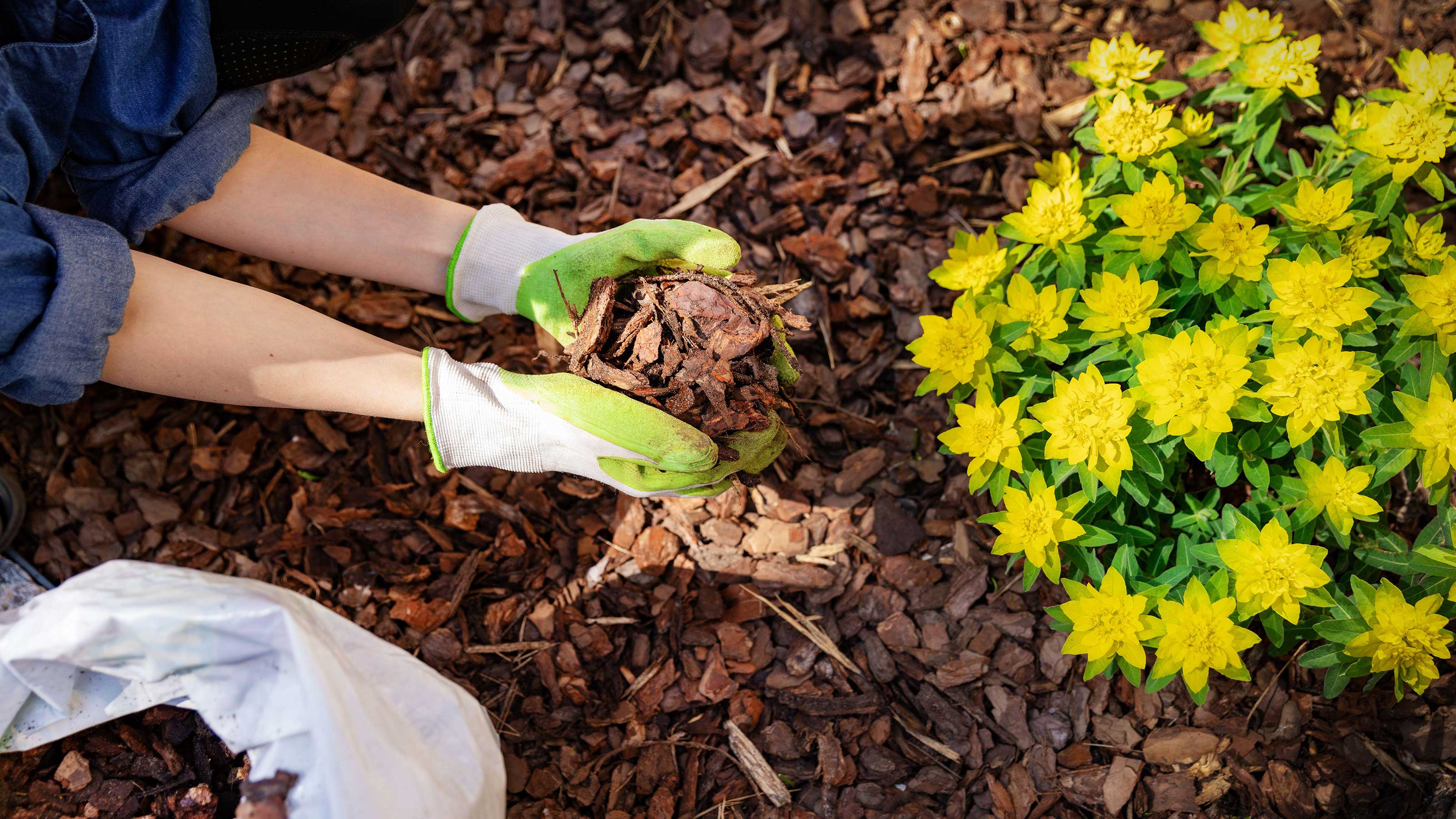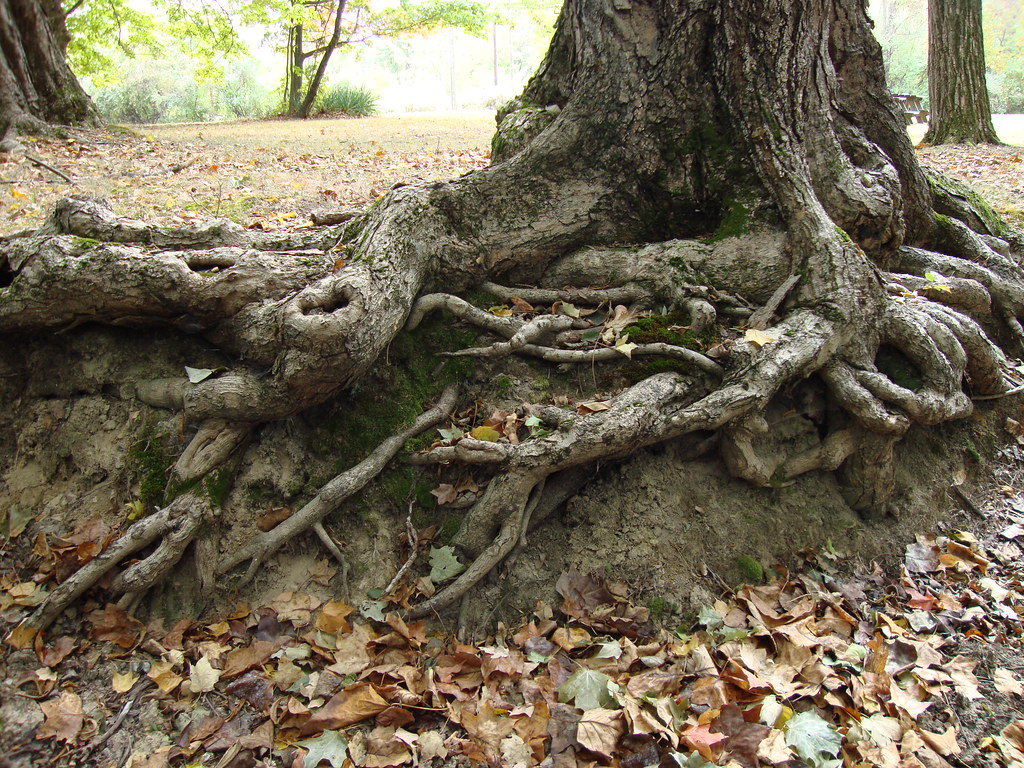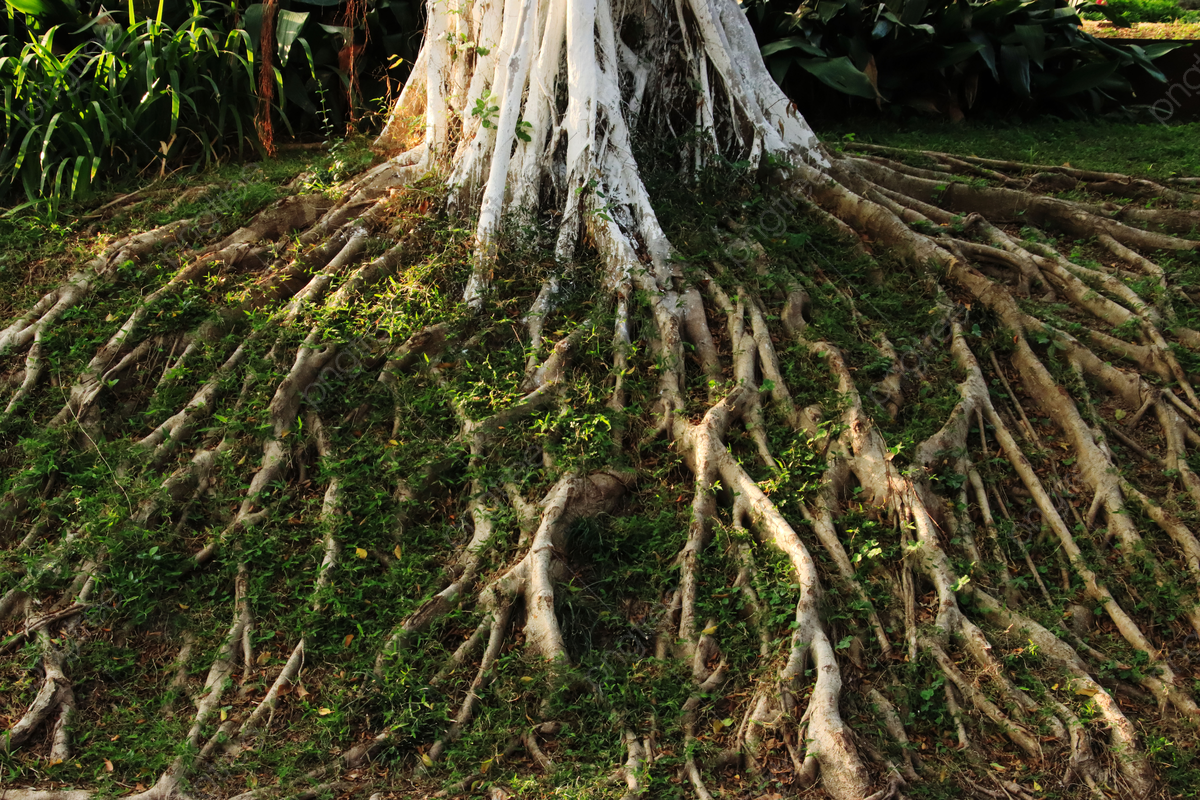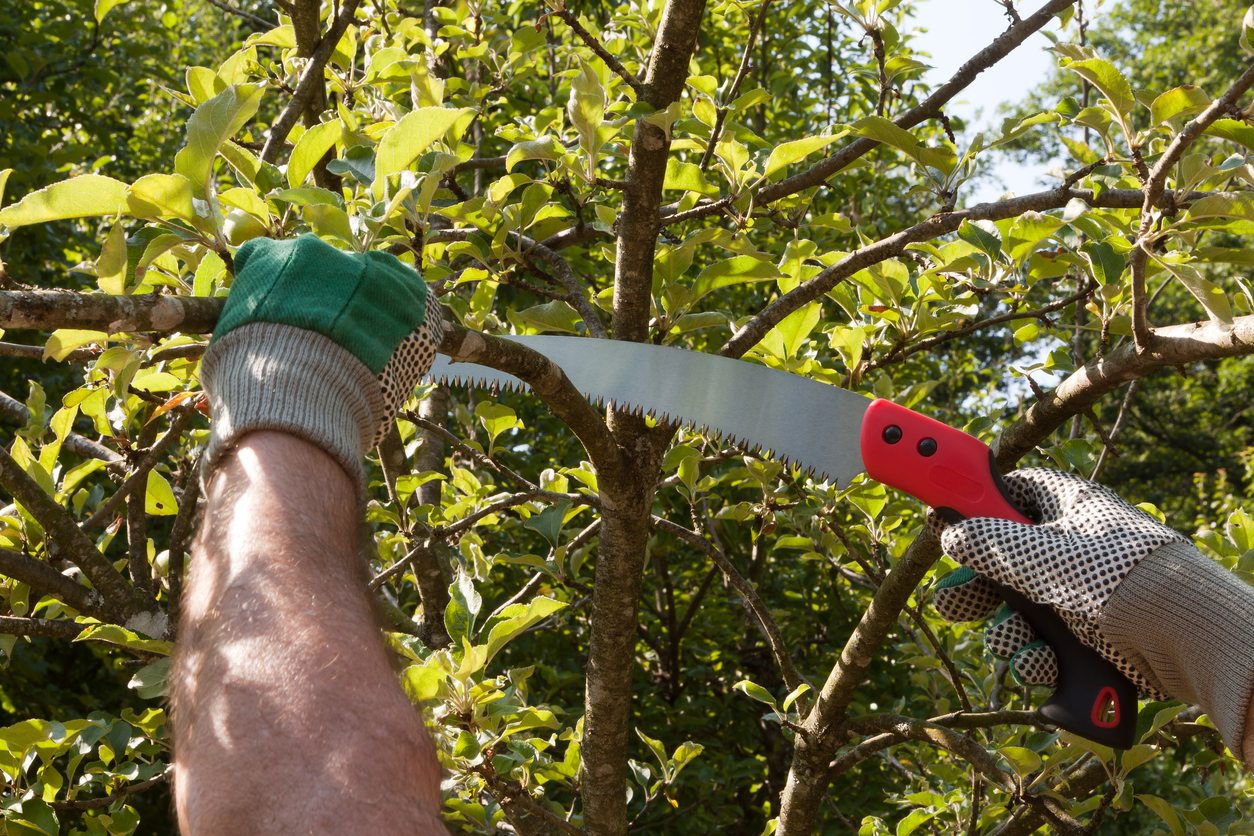When roots are above the soil, they can be easily damaged. If you want to protect your trees, have a look at the solutions proposed below.
Cover the Exposed Roots With Mulch

Step 1:
Choose a natural mulch material. A mulch layer around the tree’s roots can cushion and insulate the roots while also reducing soil erosion. Choose a material that will not absorb too much moisture from the soil around the tree’s base. Among the options are:
- Pine needles. This material is not absorbent and can thus allow moisture to easily reach the roots of your tree.
- Nuggets of pine bark If you use this material, make sure to remove old nuggets before laying down new ones; otherwise, the old mulch may absorb too much moisture from the tree’s roots.
- Mulch is made from shredded wood. Avoid putting too much of this material at the base of your tree because it absorbs moisture easily. Use a layer that is no more than 1 inch (2.5 cm) thick.
Step 2:
Lay down a layer of mulch no thicker than 3-4 inches (7.6-10.2 cm). You’ll need to put down enough mulch to cover the exposed roots, but not so much that it suffocates the roots.
When applying more absorbent mulches (like the shredded wood), apply thinner layers and keep the pile from becoming too thick when refreshing the mulch.
Step 3:
Try to make the mulch area large enough to cover the exposed tree roots. The mulched area may need to be up to two-thirds the diameter of the canopy of the tree.[3] Don’t be concerned if the mulch covers some of the lawn around the tree. Allowing the tree roots to compete with the grass will result in additional soil erosion.
Step 4:
Remember not to pile mulch against the tree’s trunk. If you pile up too much mulch right around the base of the tree, the bark at the bottom may become diseased. Allow some space between your mulched area and the tree’s base.
Covering the Roots With Ground Cover

Step 5:
The top 1-inch (2.5 cm) layer of soil around the roots should be broken up. Break up the compacted topsoil that’s found between the surface roots with a spading fork. Take care not to damage the roots and only go one inch deep (2.5 cm). Adding this ground cover means that vegetation will eventually cover the tree roots completely.
Step 6:
Cover the topsoil with no more than 2 inches (5 cm) of garden soil. Add garden soil to the newly broken-up topsoil layer, taking care not to add more than 2 inches (5 cm). If you add too much new soil to your tree, the roots will suffocate and the tree will die.
While new soil may need to be replenished each year, do not put more than 2 inches (5 cm) of soil to the base of your tree per year.
Step 7:
Apply a light layer of general-purpose granular fertilizer. Adding fertilizer will keep your tree healthy and prevent ground cover plants from depleting valuable nutrients. Sprinkle a small amount of 15-5-10 or 13-13-13 NPK fertilizer over the exposed root area, according to package directions.
Step 8:
Plant a shade-loving ground cover around the tree’s base. Choose a hardy plant that doesn’t require a lot of light or moisture. Early spring and late fall are generally the best times to plant ground cover plants. A few good options include:
- Violets in the wild
- Ajuga
- Periwinkle (vinca) (vinca)
- Monkey Grass
- Thyme creeping
- Jasmine from Asia
- Dymondia
Step 9:
Consider what type of cover is appropriate for the microclimate. You may want to choose a different type of vegetation depending on how much shade there is, how much sun there is, and whether people should be able to walk on the ground cover.
Consider a Red Apple succulent cover if you don’t need to walk on the ground cover because it grows quickly.



